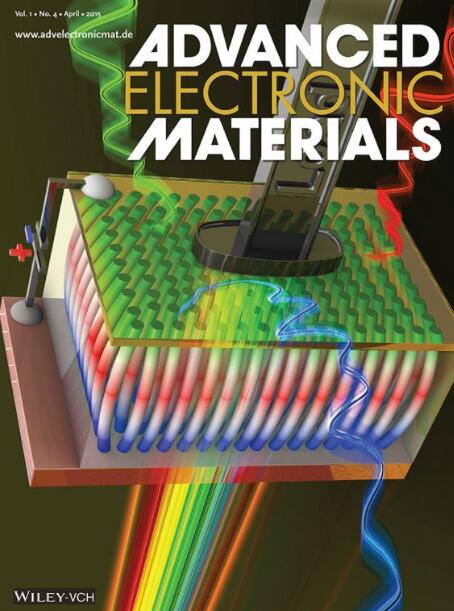Unravel the Role of Atomic Layer Deposited Al2O3 with Different Precursors on Optoelectronic Properties of IGZO Synaptic Transistors
IF 5.3
2区 材料科学
Q2 MATERIALS SCIENCE, MULTIDISCIPLINARY
引用次数: 0
Abstract
Extending the visible light response of indium gallium zinc oxide (IGZO) phototransistors is crucial for advanced optical neuromorphic computing and artificial visual perception systems. Using water (H揭示不同前驱体Al2O3原子层沉积对IGZO突触晶体管光电性能的影响
扩展铟镓锌氧化物(IGZO)光电晶体管的可见光响应对于先进的光学神经形态计算和人工视觉感知系统至关重要。在氧化铝(Al2O3)中间层的原子层沉积过程中,使用水(H2O)作为氧化剂在IGZO中引入羟基杂质,产生子隙缺陷,在420-620 nm可见光刺激下提高光敏性(≥106)和光响应性(≥0.1 A W−1)。所得的IGZO/Al2O3(H2O)突触晶体管成功地模拟了可见光驱动的可塑性。相比之下,使用臭氧(O3)作为氧化剂的Al2O3在IGZO内产生较少的缺陷,但在界面处产生了相当数量的负固定电荷,改善了IGZO与源极/漏极之间的接触性能。通过创新的实验设计和深入的表面分析,这项工作为IGZO/Al2O3结构中子间隙吸收和接触特性的微观起源提供了新的见解,为设计具有增强光电特性的可扩展突触器件提供了指导。
本文章由计算机程序翻译,如有差异,请以英文原文为准。
求助全文
约1分钟内获得全文
求助全文
来源期刊

Advanced Electronic Materials
NANOSCIENCE & NANOTECHNOLOGYMATERIALS SCIE-MATERIALS SCIENCE, MULTIDISCIPLINARY
CiteScore
11.00
自引率
3.20%
发文量
433
期刊介绍:
Advanced Electronic Materials is an interdisciplinary forum for peer-reviewed, high-quality, high-impact research in the fields of materials science, physics, and engineering of electronic and magnetic materials. It includes research on physics and physical properties of electronic and magnetic materials, spintronics, electronics, device physics and engineering, micro- and nano-electromechanical systems, and organic electronics, in addition to fundamental research.
 求助内容:
求助内容: 应助结果提醒方式:
应助结果提醒方式:


